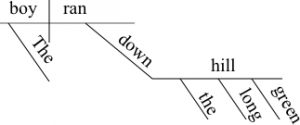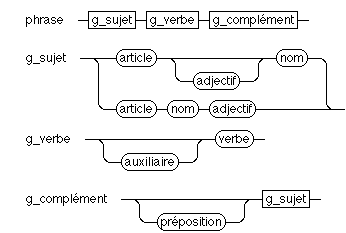
Tutore, Traditore
Recently I found myself with a couple of hours to kill downtown, so I did what I’ve always done with free time: made a bee-line for a bookstore. In this case, the Barnes & Noble multiplex on Union Square in Manhattan. After some serious browsing, the dizzying feeling of so many books and too little time set in and I found myself in the store’s café that must seat 100 people, but is nonetheless always full.
I begged the second seat at a table with a guy who had a stack of very thick economics books in front of him and quietly concentrated on my soup.
Ten minutes into the soup, a pattern began to emerge in the conversations around me. It seemed as though fully half of the tables were occupied by language Tutors and their students. Many of them were American guys teaching the English language to women from other countries.
Filtering out as much of the general noise as I could, the typical tutor/student dialogue emerged:
“Now give me an example of a gerund with that same root.”
“Can you think of an adjective that would fit in that sentence?”
“Which word is the adverb in the sentence I’m about to say?”
What I did not hear were the responses, as the questions were designed to elicit monosyllabic replies from the students, not actual spoken English. The sessions over, tutor and student would rise, shake hands, the student would leave and the teacher would resume his seat quickly before someone got the mistaken idea that he was leaving.
After a few of these sessions, the penny dropped. This was what we are always trying to explain about language learning with Pimsleur. Here was 30 minutes of halting exchange where way too much time was spent on “meta-language,” labeling each part of speech, learning grammar as if it came first and not the spoken language it attempts to describe. In a Pimsleur lesson you are listening to the new language being spoken, or you yourself are speaking it aloud for some 80% of a half-hour lesson.
In order to lay the groundwork for your being able to take what you learn and add in new vocabulary when you are out in the real world, Pimsleur teaches what are called “structures” in each lesson. They are not labeled as such, and you don’t know you are learning them until you begin to use them in conversation.
I must admit to getting a kick out of diagramming sentences in Ms. Staats seventh Grade English Class – what Virgo wouldn’t? For me, however, actually speaking another language – Spanish daily, with the Abuelas in my apartment building, French while haggling with rug merchants in Morocco, or Italian first learned because I had a huge crush on a certain Florentine native speaker– is the payoff.
These are the things that inspire me and which the Pimsleur Method™ with its combination of science and magic puts within reach of its learners in a way that no other language learning program does.

Note: Tutore, Traditore, is a pun on an Italian pun. The more familiar version is Traduttore, Traditore – which means Translator=Traitor, aka to translate is to be untrue, disloyal to the original text. Tutore more precisely means “guardian” in Italian, but precettore would rob me of the alliteration.
No Comments for "Language Learning: Tutore, Traditore"